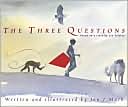Category Books
- Fiction Books & Literature
- Graphic Novels
- Horror
- Mystery & Crime
- Poetry
- Romance Books
- Science Fiction & Fantasy
- Thrillers
- Westerns
- Ages 0-2
- Ages 3-5
- Ages 6-8
- Ages 9-12
- Teens
- Children's Books
- African Americans
- Antiques & Collectibles
- Art, Architecture & Photography
- Bibles & Bible Studies
- Biography
- Business Books
- Christianity
- Computer Books & Technology Books
- Cookbooks, Food & Wine
- Crafts & Hobbies Books
- Education & Teaching
- Engineering
- Entertainment
- Foreign Languages
- Game Books
- Gay & Lesbian
- Health Books, Diet & Fitness Books
- History
- Home & Garden
- Humor Books
- Judaism & Judaica
- Law
- Medical Books
- New Age & Spirituality
- Nonfiction
- Parenting & Family
- Pets
- Philosophy
- Political Books & Current Events Books
- Psychology & Psychotherapy
- Reference
- Religion Books
- Science & Nature
- Self Improvement
- Sex & Relationships
- Social Sciences
- Sports & Adventure
- Study Guides & Test Prep
- Travel
- True Crime
- Weddings
- Women's Studies
The Three Questions »

Authors: Jon J. Muth (Illustrator), Leo Tolstoy
ISBN-13: 9780439199964, ISBN-10: 0439199964
Format: Hardcover
Publisher: Scholastic, Inc.
Date Published: April 2002
Edition: (Non-applicable)
Author Biography: Jon J. Muth
Book Synopsis
What is the best time to do things? Who is the most important one? What is the right thing to do? Nikolai knows that he wants to be the best person he can be, but often he is unsure if he is doing the right thing. So he goes to ask Leo, the wise turtle. When he arrives, the turtle is struggling to dig in his garden, and Nikolai rushes to help him. As he finishes work, a violent storm rolls in. Nikolai runs for Leo's cottage, but on his way, he hears cries for help from an injured panda. Nikolai brings her in from the cold, and then rushes back outside to rescue her baby too.
Publishers Weekly
Muth (Come On, Rain!) recasts a short story by Tolstoy into picture-book format, substituting a boy and his animal friends for the czar and his human companions. Yearning to be a good person, Nikolai asks, "When is the best time to do things? Who is the most important one? What is the right thing to do?" Sonya the heron, Gogol the monkey and Pushkin the dog offer their opinions, but their answers do not satisfy Nikolai. He visits Leo, an old turtle who lives in the mountains. While there, he helps Leo with his garden and rescues an injured panda and her cub, and in so doing, finds the answers he seeks. As Leo explains, "There is only one important time, and that time is now. The most important one is always the one you are with. And the most important thing is to do good for the one who is standing at your side." Moral without being moralistic, the tale sends a simple and direct message unfreighted by pomp or pedantry. Muth's art is as carefully distilled as his prose. A series of misty, evocative watercolors in muted tones suggests the figures and their changing relationships to the landscape. Judicious flashes of color quicken the compositions, as in the red of Nikolai's kite (the kite, released at the end, takes on symbolic value). An afterword describes Tolstoy and his work. Ages 6-up. (Apr.) Copyright 2001 Cahners Business Information.
Table of Contents
Subjects

